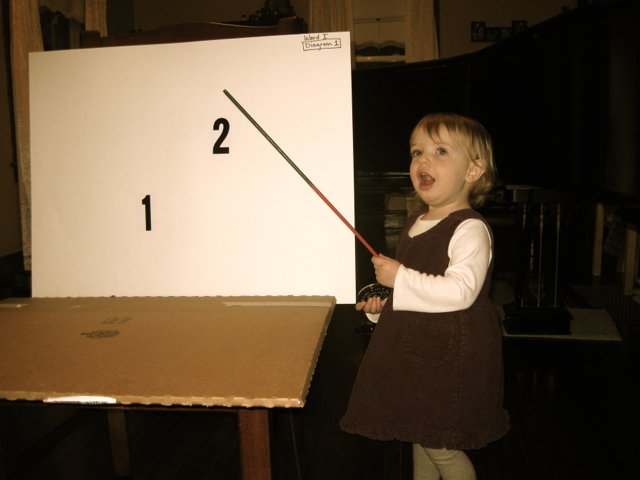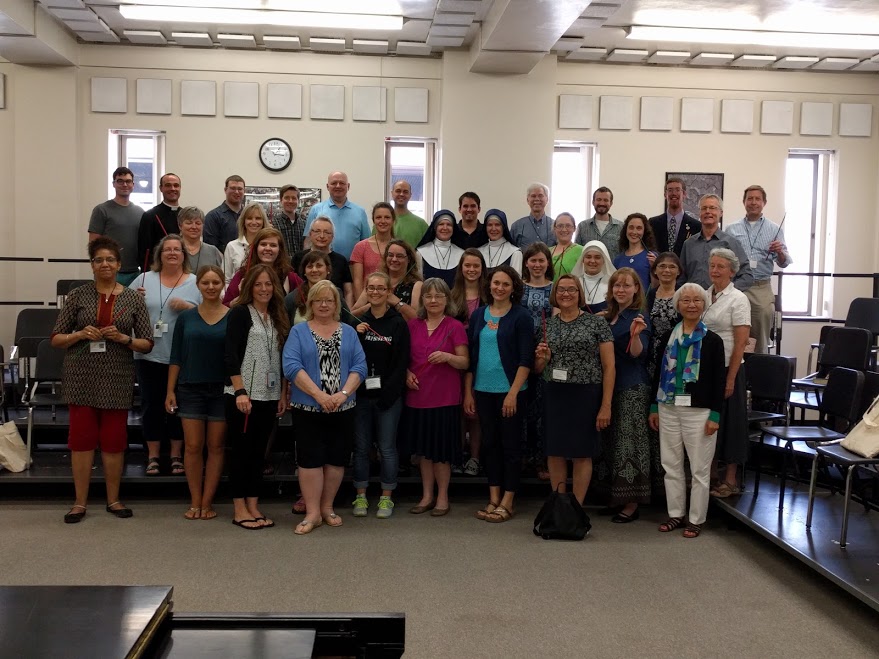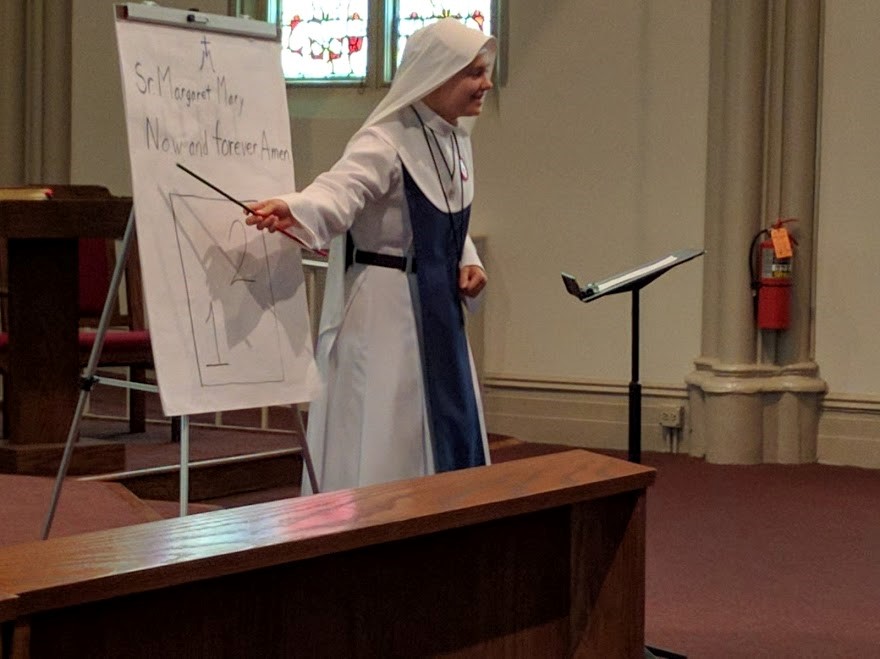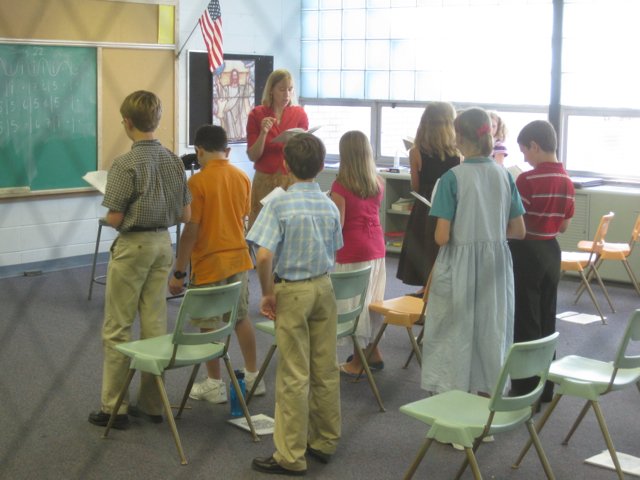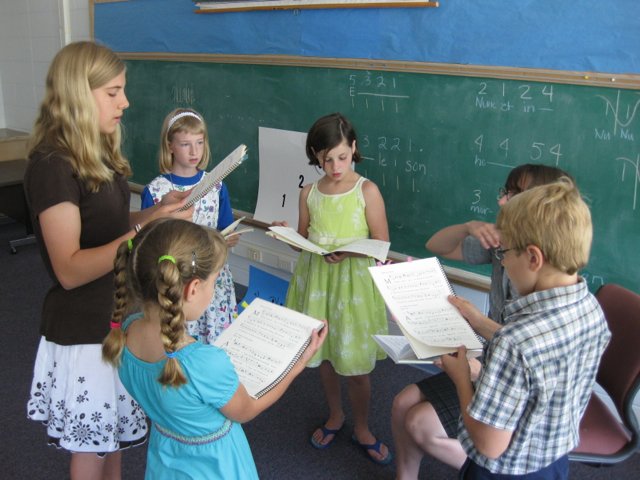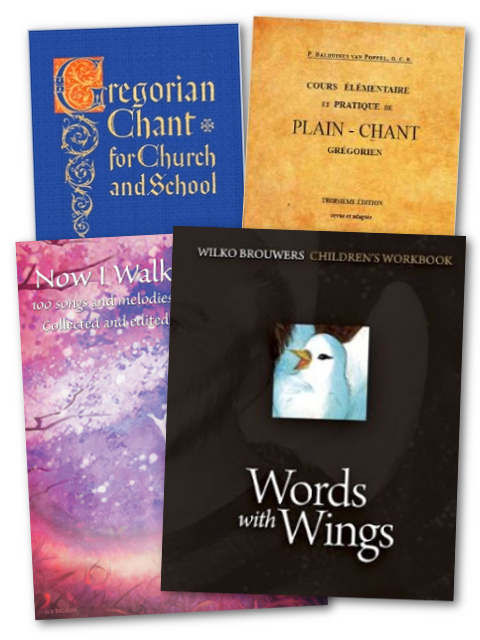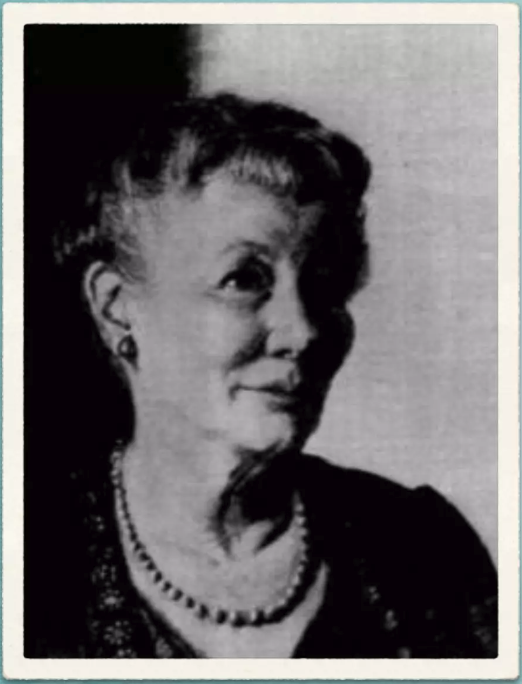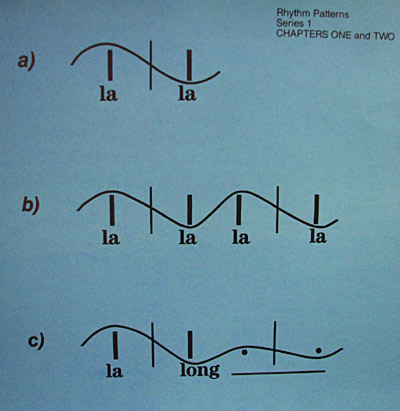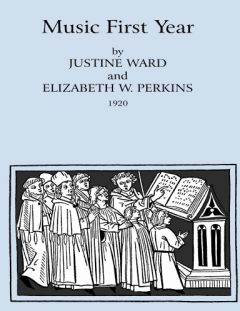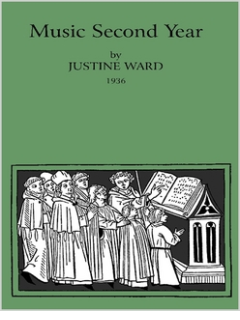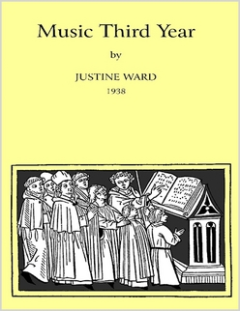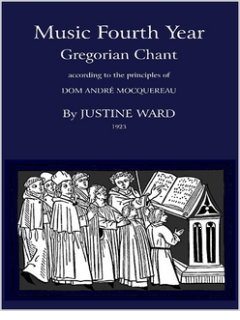Teaching Resources
“We have to start building the Church through God’s children, that all may sing.”
Justine Bayard Ward
CMAA Teaching Texts
Learning Starts Here
The CMAA offers ample opportunity for improving your parish and school music. Purchase high quality teaching tools in one of many available areas:
-
- Vocal Production
- Conducting / Chironomy
- Gregorian Chant
Teaching Children
Children’s Chant for the Third Millennium (booklet and audio files)
Gregorian Chant Vol. II (Justine Ward, 1949)
Story of Redemption in Chant (children)
General Teaching Materials
Dominic Johner, OSB: A New School of Gregorian Chant (1925)
Arlene Oost-Zinner and Jeffrey Tucker: An Idiot’s Guide to Square Notes
Robert Joseph Carroll: An Applied Course in Gregorian Chant (1956)
Sr. Mary Demetria: Basic Gregorian Chant and Sight Reading (1960)
Common Tones for the Sung Mass (excerpt from the Liber Usualis)
Balduinus Van Poppel, OCR: Cours Élémentaire et Pratique du Plain-Chant Grégorien (solfège exercises)
Guide to Neumes, from Marier and Turkington’s “A Gregorian Chant Master Class”
Joseph Robert Carroll: Technique of Gregorian Chironomy (1955)
Gregory Suñol, OSB: Textbook of Gregorian Chant (1930)
The Ward Method
The Ward Method of Music Instruction is a progressive method of teaching elementary school children – through vocal instruction – music theory, composition and conducting. The Method was developed to teach American Catholic school children the fundamentals of music so that they would be able to sing the vast repertoire of sacred music which is a part of the Roman Catholic Church’s tradition. The Ward Method is unique in that it has a basis in Gregorian chant.
Amy Zuberbueler, Director of The International Center for Ward Method Studies, CUA
Justine Ward, the founder of the method bearing her name, was born on August 7, 1879. In 1904 she converted to Catholicism and in gratitude for her conversion, Ward decided to support and promote the reform of sacred music begun by Pope Pius X. She developed her method in response to a request from Fr. Thomas E. Shields, chair of the first department of education at The Catholic University of America. In writing her method, Ward combined the philosophy and pedagogy of Shields and the music methods used by Fr. John B. Young, S.J. Originally from Alsace, Young had been sent to America in the 1870s and was instrumental in Ward’s conversion.
When Pope Pius X was elected and the reform of sacred music began in Rome, Young helped support it in New York as music director of St. Francis Xavier Church in New York City. Young assisted Ward with many of the musical elements of her method, the number notation and intonation and vocal exercises, which he had learned through the French music educators, Pierre Galin and Emile Cheve, and the bel canto school of teaching voice. The first editions of the Ward Method, Music First and Second Year, were published in 1913. In 1920 Ward met and began studying Gregorian chant with Dom Andre Mocquereau, founder of the Solesmes Method of the rhythmic interpretation of Gregorian chant. Through his influence she revised the rhythmic portions of her method during the 1920s and established the Method as it is known today.
One of the first educational psychologists in this country, Fr. Thomas Shields believed that from the earliest years, the child’s emotions must be developed to lead to the formation of worthy character.
Writing in the Catholic Educational Review, he once said, “The real foundations of character are not to be found in the intellect, but in the emotions and the will properly enlightened through the intellect, and it is through music and art that the imagination and the emotions may be reached and effectively developed.” Shields perceived this both as a psychologist and as a Catholic priest.
The Catholic Church has, throughout its history, promoted the arts. Knowing man to be composed of both body and spirit, the Church understands mans need for sensible, tangible things to relate body and spirit. Through the Ward method children are exposed to truth and beauty through music so they will respond to emotional stimulus of a higher order.
Shields taught that information must be presented to a child in a manner which conforms to the child’s stage of development. If a child is given the correct stimulus at the right time in development, any child should be able to learn.
The subject matter should be broken down into fundamental principles. Each lesson must include the process of relating the known to the unknown. The child can then be stimulated to use these new truths through personal experience. Ward applied these principles to music by separating the musical elements of each lesson. The children discover vocal and intonation exercises, count meter, and experience rhythm as movement. They creatively use each musical element through exercises, games and their own compositions. Thus, when the children are presented with a new song at the end of the lesson, they are easily able to separate and then rejoin the musical elements it contains.
During the 1920s use of the Ward Method spread throughout the United States. In 1925 Ward brought her Method to Holland. Under the direction of Joseph Lennards, it spread throughout both Catholic and Protestant schools in the Netherlands. Dutch government officials became interested in the Method and provided subsidies to educate teachers. The Method began to be used in government schools.
The Method was next introduced in Belgium and France and then extended to England, Ireland, New Zealand, China, and Italy. During World War II its use spread throughout Central and South America. Following the war it was used in Canada, Africa and the Far East. In 1972 the state of Israel introduced the Ward Method, offering a course for the top classes of the State College for Music Teachers in Tel-Aviv.
During these turbulent years, the Catholic Church and its entire Catholic education system were being challenged. Accordingly, the system was failing to attract clientele, and thus lost financial support. At the same time, priests, nuns, and brothers who made up the bulk of the virtually unpaid personnel of the American Catholic educational system were abandoning their professions, and indeed the religious life in a great many instances. Lacking support, the Ward Method met with almost total eclipse.
The Method continues to be introduced to new generations each year.
Historic Texts
These texts are provided for historic study only. Those interested in learning the Ward Method of instruction are encouraged to study at the International Center for Ward Studies at the Catholic University of America.
Ward-inspired Resources
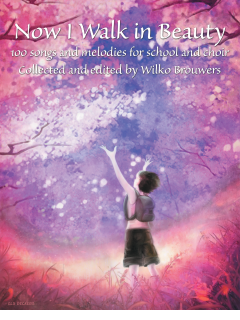
Now I Walk in Beauty - Wilko Brouwers
100 songs, melodies, and musical exercises to be used in music lessons and choir rehearsals based on the Ward Method. A master of the Ward method, Wilko Brouwers developed this wonderful collection of songs and melodies for use in teaching the Ward method to children. Progressing from the simple use of numbers to teach the children the first building blocks of solfege, all the way to a complete five-line staff , 2-part choral piece, Brouwers beautifully incorporates the fundamental elements of the Ward Method in this lovely collection.
With a complete index with information about each melody or song, he also adds an appendix with detailed instruction for the teacher regarding the teaching elements for each lesson including a suggested pitch, intonation, rhythm, gestures and notation.
This book is a great tool for the Ward method teacher, or for use in combination with other methods with up-to-date, fresh repertory.


